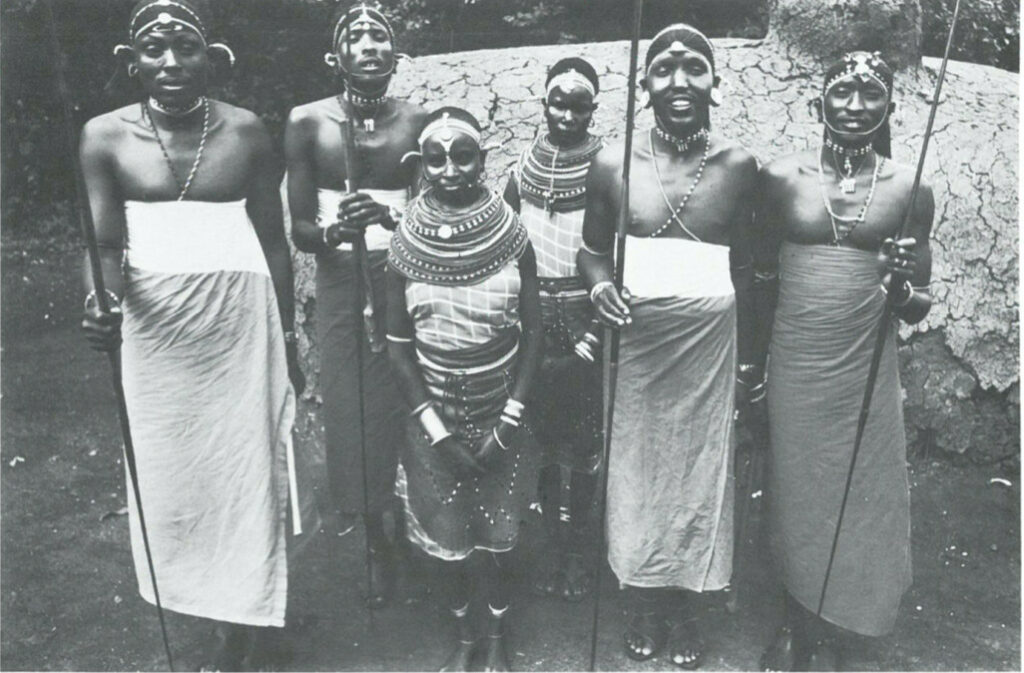
During the past ten years, more black-Americans have visited Africa than ever before, and many more are planning to go. Nevertheless, a sizable number of people still hesitate about making such a journey because of certain unanswered questions and hard-to-shed myths: Is it extremely hot there? What kinds of food do Africans eat? Is it true that Africans don’t like blackAmericans? Will I get bitten by some strange bug and become deathly ill? Others still steadfastly believe that wild animals are lurking everywhere—nothing can be further from the truth. The continent of Africa offers its visitors a broad range of vacation pleasures in pleasant climates and in safe, healthy environments.
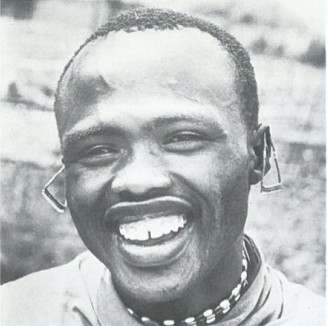
Few African countries so thoroughly exemplify the diversity of the continent as Kenya, which lies across the Equator on the eastern seaboard of Africa. This nation encompasses 225,000 square miles of beauty, splendor and adventure. Along its coastline are miles and miles of sandy, palm-fringed coral beaches whose gem-colored waters sparkle like emeralds, sapphires and turquoise. Inland, one discovers massive mountains, endless golden plains, rushing rivers and thick, verdant forests. In grassy Savannah, where animals roam in their natural habitats, one can observe lions, zebras, leopards, buffalo and rhinos at close range. The awesome Mt. Kenya, rising 17,058 feet in the air, is the second highest mountain in Africa. The Great Rift Valley — the largest crack in the earth’s surface — extends over four thousand miles, running from Lebanon in the North, through Kenya, to Mozambique in the South. Formed by the too-rapid cooling of the earth in the Ice Age, the valley is one of Kenya’s must-see attractions. At its basin lies Lake Nakuru, where, at certain times of the year, up to two million pink flamingos may collect. When these birds take flight, they transform the sky into a rose-colored canopy, a breathtaking sight.
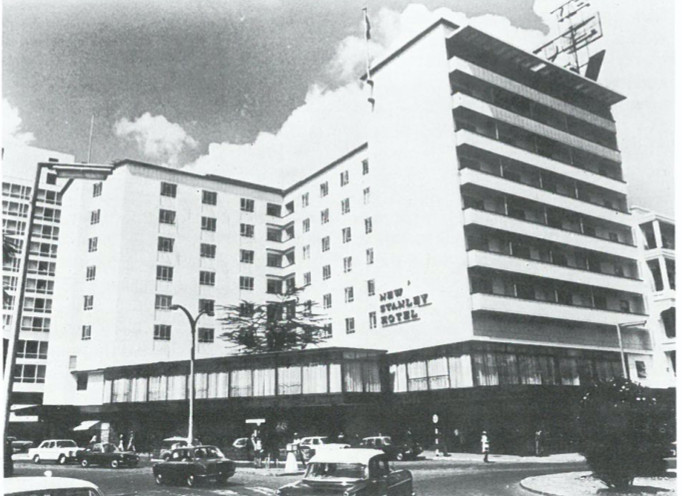
Nairobi, the capital and cosmopolitan center of Kenya, is a stylishly modern city, complete with tree-lined avenues, superb hotels, high-rise buildings, bazaars and outdoor cafes. Cinemas, theaters, museums, discotheques, nightclubs and international casinos abound throughout the town. The newly constructed Conference Hall, looking like a tower composed of stacked flying saucers, forms an impressive addition to the city.
One of Nairobi’s foremost attractions is its weather. Since the city lies five thousand feet above sea level, the temperature there is always pleasant. The visitor’s leisure hours may be comfortably spent people watching at one of Nairobi’s many outdoor cafes. A popular lounging spot is the Thorntree Cafe, situated at the New Stanley Hotel, one of the city’s luxury establishments.
Luxurious living accommodations are also found at the Inter-Continental, the Nairobi Hilton and the Masai Lodge. For approximately $45 a night, these hotels usually offer car-for-hire service, babysitters (ayahs), communication centers, swimming pools, restaurants, shopping arcades and health clinics.
Some of the less expensive hotels are the Ambassadeur, the New Avenue and the Boulevard. The Ambassadeur’s coffee shop serves tasty, reasonably priced snacks. If one is really on a budget, the YWCA is the place to stay. In walking distance from town, it accommodates both couples and families. The Gloria Hotel, which is also very inexpensive, provides a delicious breakfast of eggs, cereal, fruit and tea.
Nairobi’s population comprises an interesting mixture of Africans, Asians, Arabs and Europeans. This helps to explain the variety of foreign restaurants found throughout the city.
The Three Bells Restaurant, on Tom Mboya Street, is renowned for its oriental specialties, seafood and masala curries. Offering a taste of Switzerland in the center of Nairobi is Club Le Chalet, which also features a grill room, nightclub and disco.
The Wimpy Bar in the Diamond Trust Building, also on Tom Mboya Street, serves the best french fries and the cheapest meal in town.
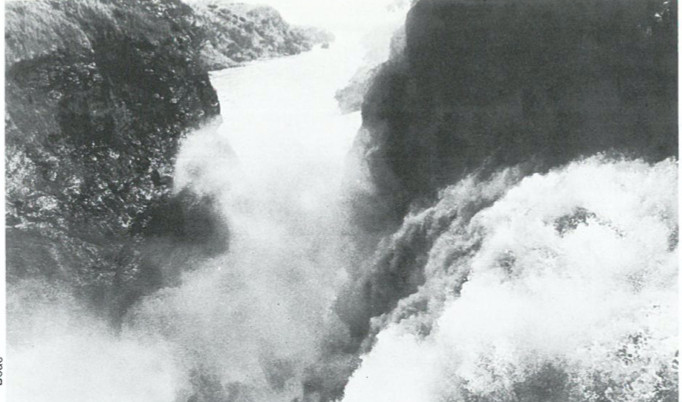 All Nairobi hotels have restaurants and quick food places which offer a continental cuisine. African dishes are served at the Pan Afrique (located outside of Nairobi) and the Norfolk hotels. An average lunch in the city costs approximately $3, while a good dinner usually runs to about $6.
All Nairobi hotels have restaurants and quick food places which offer a continental cuisine. African dishes are served at the Pan Afrique (located outside of Nairobi) and the Norfolk hotels. An average lunch in the city costs approximately $3, while a good dinner usually runs to about $6.
At night, Nairobi swings. Dancers can trip the light fantastic in elegant hotels, psychedelic discos or in nightclubs which feature flamboyant floor shows. The most popularly frequented clubs among the Africans are 1900, The Factory, New Florida and The Star, located outside of town.
The markets of Nairobi are replete with goods of all kinds. At the Coriakor Market, the vacationer may purchase sisal ropes, pumice stones, plants that are used for washing the body, handmade iron pots and pans, food grinders and various other native products. The Eastly Factory features hand printed Maridadi fabrics, which display colorful traditional African designs. One can observe these prints being made as well as purchase them. A bus in town takes shoppers right to the factory.
If you want to have your hair styled in braids, beads and shells or wrapped with thread, then visit one of the many beauty shops in town. Prices range from $5 to $10. Don’t miss the interesting little bead shop on Biashara Street either.
One caution: it is not wise to engage in any money transactions on the streets of the city. Unfortunately, many tourists have been swindled out of large sums of money this way. Banks are the best places for changing currency.
No trip to Kenya is complete without visiting Mombasa, the largest city on the coast. From Nairobi, one can travel to Mombasa either by rail or by road. Along the way, the journeyer encounters miles and miles of Tsavo National Parks, which have the largest concentration of elephants in the world.
Mombasa, an ancient port city, is the major resort area for local and overseas tourists. Hundreds of coconut palm trees lean against the wind on its lovely white beaches. The warm water, the color of aquamarine, sparkles in the moonlight, and harmless monkeys may be spotted playing about on the shore.
Built-in 1974, the elegant Serena Beach Hotel, with its white Moorish arches and balconies, spacious verandas and dining porches overlooking the ocean, resembles an 18th century Swahili village. Offering moderate accommodations are the Hadini Beach Hotel, the Marani Club, the Coral Beach and the Turtle Bay hotels.
Walking through the streets of Mombasa, the tourist encounters gleaming white mosques, Moslem women with black cloth drawn across their faces and Arab men wearing caps of richly embroidered silks. However, the predominant group on the coast is the Swahili. Their language, a mixture of Arab and African, is widely spoken throughout Kenya.
In and about Mombasa are remnants of Kenyan history. Two famous historic landmarks are: Fort Jesus, built by the Portuguese in 1562 to defend themselves against the Arabs who were attempting to take their empire, and the Gedi Ruins, the remains of the Arab empire that existed here in the 14th or 15th century.
Mombasa is also known for its wide variety of shops. Open markets, bazaars and small stores line the streets, selling spices, silks, woven goods of sisal ropes and banana leaves and gold and silver jewelry.
The city’s nightlife offers something for everyone. Dancing at the beach hotels is a popular nighttime activity.
Although the city life of Kenya holds endless fascinations, the best way to get to know the country is through its people. While the tourist centers offer abundant information, it is nevertheless limited in scope and unable to provide the traveler with a balanced view of the country. So, be adventurous and hire a car, or perhaps tour the countryside by bus or train to interesting towns like Kakamega, Naivasha and Kericho. The sightseer experiences a variety of cultural differences traveling from one of these towns to another, which help to comprise the lifeblood of the country.
Kenya’s population of 12 million constitutes an ethnological melting pot of groups. Dispersed throughout the countryside are the homelands of the Kikuyu, Baluyia, Kalenjin, Masai, Meru and Kamba tribes. Each tribe has its own unique language and ceremonial customs. A large community of Indians, whose ancestors came from India in the 19th century to work on the railroad, also inhabit Kenya.
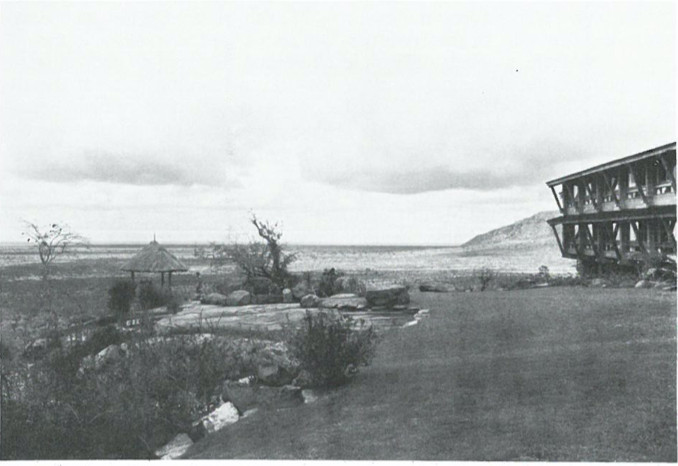 Kenya’s Central Highlands boast some of the most beautiful landscapes in the country. Visualize lush, rolling green hills, sweeping corn stalks, massive cattle ranches and clusters of thatched beehive cottages dotting the hillsides to get an inkling of the majesty of the area. Amidst this splendor live the Kikuyus, Kenya’s largest and most influential tribe.
Kenya’s Central Highlands boast some of the most beautiful landscapes in the country. Visualize lush, rolling green hills, sweeping corn stalks, massive cattle ranches and clusters of thatched beehive cottages dotting the hillsides to get an inkling of the majesty of the area. Amidst this splendor live the Kikuyus, Kenya’s largest and most influential tribe.
Leaving the central province, the traveler ascends to the town of Kitale, situated near Mt. Elgon, Kenya’s second highest mountain, and the Ugandan border. A rich farming district, Kitale’s landscape resembles a green-hued patchwork quilt. Several groups of people, collectively called the Kalenjin, reside in this area. The magnificent tea gardens of Kericho and Kisii house many of the tribe’s members. Most of Kenya’s world-renowned athletes, including Kip Keno and Henry Rono, originate from this district.
Close by is the town of Kakamega, where the Baluyia people dwell. The Baluyias are progressive farmers, who grow mostly corn, beans, tea and peas. The best soccer players in East Africa, the Baluyias are also excellent musicians and dancers. Their modern music is rapidly reaching the level of the Congolese, the finest musicians in Africa.
On the north shore of the lake basin lies the city of Kisumu, where there is a large concentration of Luo people. They, too, are good farmers and fishermen. Although scholarly and well-versed in modern western thought, the Luo’s cultural traditions remain strong. The Luo ceremonial dress of colobus skins, hippo teeth and python bones is spectacular.
A fun spot in Kisumu is Hippo Point, where lazy hippos bask in the sunshine and wallow about in the water. When they open their mouths, the holes look like yawning caverns.
Anyone who would like to spend some time in this area can find comfortable lodging at the Sunset, a recently erected, modern hotel, situated at Hippo Point. Visitors on a tight budget will receive sufficient service at the New Kisumu and Lakeview hotels.
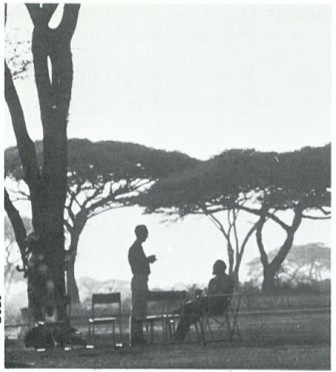 Anyone who has sojourned in Kakamega can never forget the warmth and conviviality of its people. Being constantly greeted by villagers uttering Mulembe (hello or how are you) makes the visitor feel a member of one big family. Often the Baluyia people offer to share their simply prepared, traditional dishes with their guests.
Anyone who has sojourned in Kakamega can never forget the warmth and conviviality of its people. Being constantly greeted by villagers uttering Mulembe (hello or how are you) makes the visitor feel a member of one big family. Often the Baluyia people offer to share their simply prepared, traditional dishes with their guests.
Ugali, one of the Baluyias’s main staples, is made out of grain, cooked to a stiff consistency and eaten with chicken, meat or vegetables. Likhube, made from the leaves of the pea plant, is another popular dish. Like many Americans, the Baluyias eat something called omurere, more commonly known as okra.
South of Kakamega is the basin of Lake Victoria, the largest lake in Africa and the source of the Nile River. Intriguing sites abound around the lake. For example, at Simbi, there is a body of water whose source is unknown. According to legend, the lake was created by an old woman who turned a village into a lake after she was ignored by its people. Although this lake is narrow, no matter how many times one tries to throw a rock across it, its gravitational pull prevents the rock from reaching the other side.
Another famous site is an historic rock in a place called Gwasi. Embedded in this rock are the footprints of humans and animals. Some Baluyias claim long ago there was a fisherman who seized a beautiful woman out of Lake Victoria. After marrying her, he became very wealthy and very polygamous. One night, after arriving home in a drunken state and finding his house padlocked, he cursed all his wives. When the wife from the lake heard of this, she decided to leave and take all the fisherman’s possessions with her. Determined not to allow this to happen, the husband engaged in a tug-of-war with her. The result of the struggle is the footprints.
Climatic as well as topographical changes occur as one moves westward from the cool temperatures of Nairobi to the warm breezes around Lake Victoria, where the direction of the breezes depends on the time of day. During the afternoon, when it is hot, the wind blows toward the mainland; in the evening, when it is cooler, the wind blows towards the lake, which provides a natural air-conditioning system for the who live on its shores.
The best way to spend time in Kisumu, however, is with a family. Nairobi’s Hotel Hilton arranges cultural safaris for visitors who wish to live in the country with Kenyan families. Although English is widely spoken in Kenya, learning a few words in Luo, if only misawa (hello) and oriti (goodbye), would greatly enhance the experience of living in a local household. Another benefit derived from this kind of arrangement is the chance to sample | a variety of Luo dishes.
The Luos eat a dish made out of grain called kuon, similar to the ‘ugali eaten by the Baluyias. Except for around the coast where rice predominates, this dish, with some slight variations, is a staple for most Kenyans. Another favorite Luo dish is nyoyo, a delicious combination of corn and beans. Partaking in these tasty meals makes it very difficult for one to leave Kisumu, but eventually one must say ‘oriti and continue the journey,
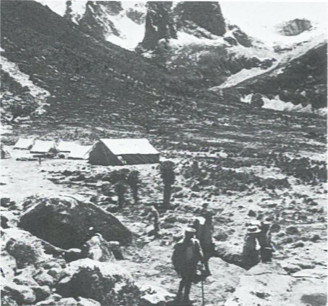 In the nearby Olambwe Valley, a fascinating variety of animals, including roan antelope, lions, rhinos and buffalo, roam the landscape. To the Southeast is another game reserve, called the Masai Mara, where black-maned lions, blue-shanked topi, zebras, wildebeest and many other species of animals find sanctuary. The Mara Serena and the Keekorok Lodge in the Masai Mara provide excellent accommodations.
In the nearby Olambwe Valley, a fascinating variety of animals, including roan antelope, lions, rhinos and buffalo, roam the landscape. To the Southeast is another game reserve, called the Masai Mara, where black-maned lions, blue-shanked topi, zebras, wildebeest and many other species of animals find sanctuary. The Mara Serena and the Keekorok Lodge in the Masai Mara provide excellent accommodations.
This area houses the proud Masai people. The men are tall, regal and handsome, and the women, with their shaven heads, are exquisitely beautiful. Like many black women in the United States, the Masai women wear several pairs of earrings. Refusing to adopt western ways and resistant to cultural currents other than their own, the Masais live as they have lived for centuries. They continue to wear their red ochre dresses and beadwork decorations; cow’s blood is still a significant part of their diet.
This tour provides only a small picture of Kenya. Much more awaits the visitor’s discovery. The Kenya Tourist Board, at 60 East 56th Street, New York City, will be happy to assist anyone contemplating a trip to this land of adventure.
Keep reading this issue – next article
See a list of all archived ROUTES editions
